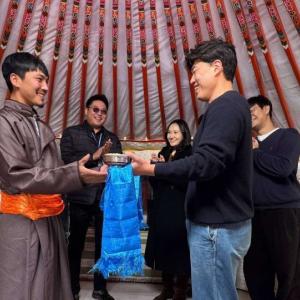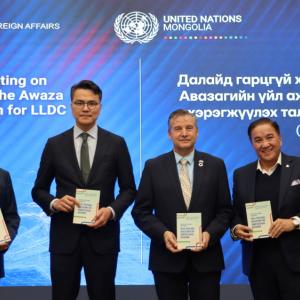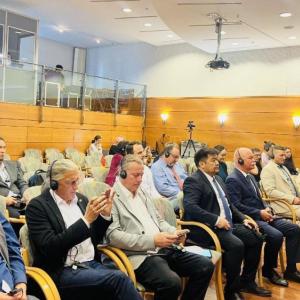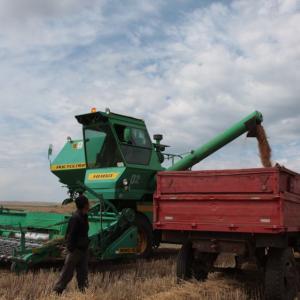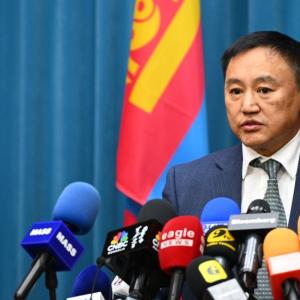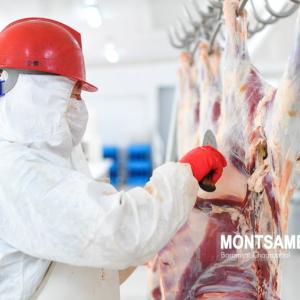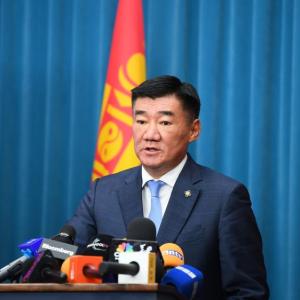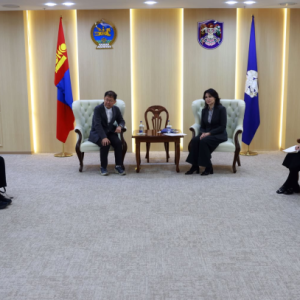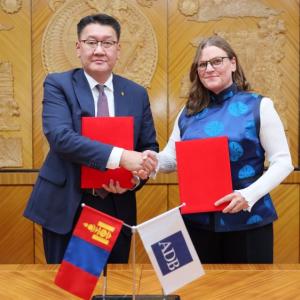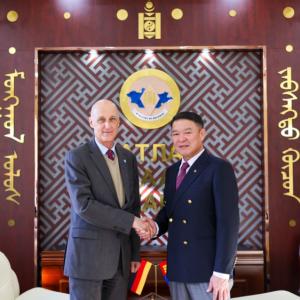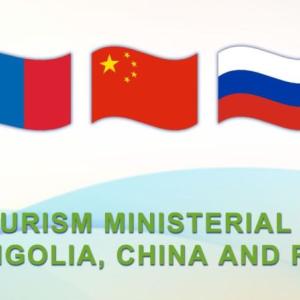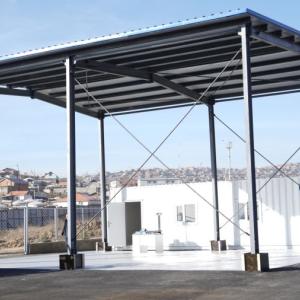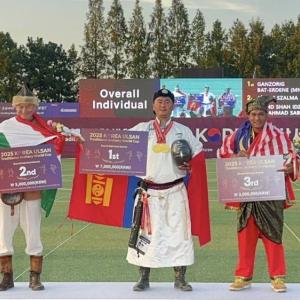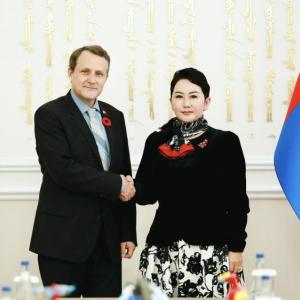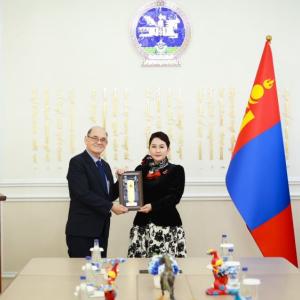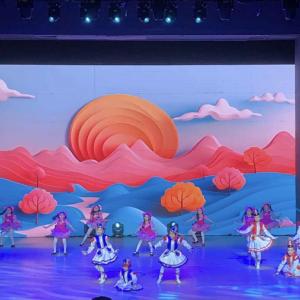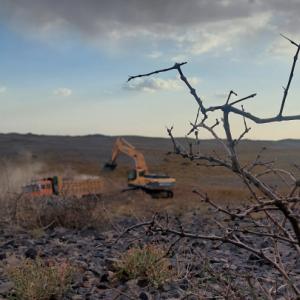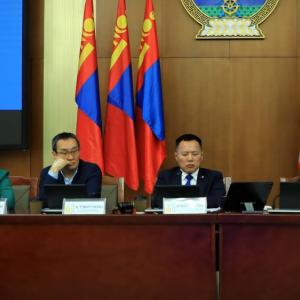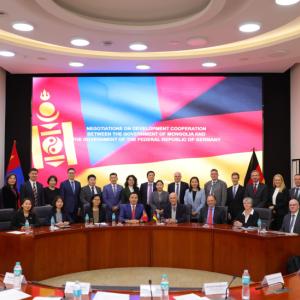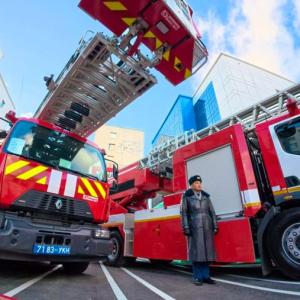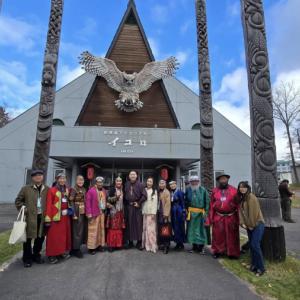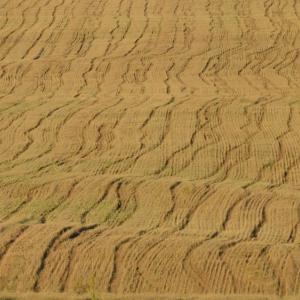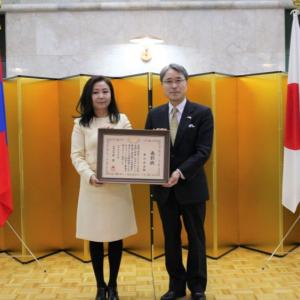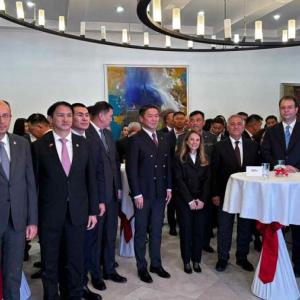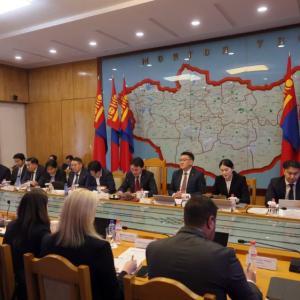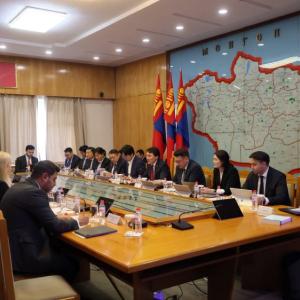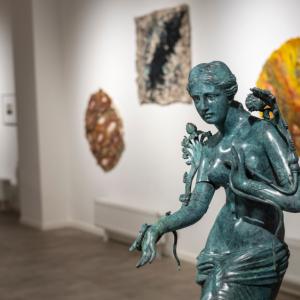A ‘Window’ To Gaze At Birds
The Mongol Messenger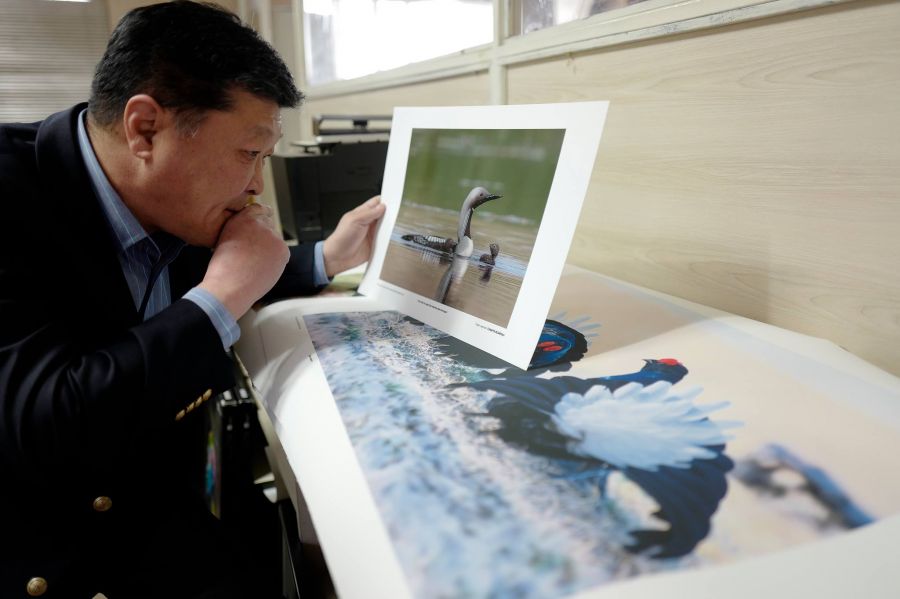
Ulaanbaatar /MONTSAME/ Photographer L.Jargalsaikhan took photos of
around 370 of the total 513 species of birds recorded in Mongolia to date. His
photos have their very own theme as each of them highlights the bird’s grace
and beauty rather than its character, lifestyle, and sustenance. That is maybe
why the line ‘like the birds, praise the warm red sun casting long shadows on
its way down to setting’ comes into my mind at this moment. Everyday has its
space in time where unpredictable encounters await us. There is no way to tell
what bird will be chirping as the sun rises tomorrow. We had the opportunity to
interview Jargalsaikhan and it was as if all birds were welcoming the morning
sun.
Just
like the best feeling you experienced today would never fade away, there is no
end to the world’s tomorrows. We recommend reading the interview, where never
ceases to be chirping sounds of birds, with the feeling as if you were gazing
at the beauty of the nature through the window.
- I
NEVER TAKE PHOTOS OF CHICKS AND BIRD NESTS -
Mongolia
is home to a large number of bird species, most of which migrate. People mostly
believe that a lot of bird species inhabit steppes and the Khangai region. What
about the Gobi region? What species live there and how many of them have you
come across?
-Experts deem that Mongolia
has a great number of bird species. Of the total of 513 bird species recorded
in Mongolia, around 80 percent are migratory birds. Therefore, it is important
to take into account how much time the bird will spend in Mongolia when choosing
the photo-shoot location. Several species of birds oftentimes gather on small
springs during their migration through the Gobi region.
There are also unique species like Mongolian ground jay and chukar partridge (Alectoris chukar) that got relatively used to the Gobi region.

Chukar partridge (Alectoris chukar)
You
just said many migratory birds pass through Mongolia. Does that have anything
to do with the country’s geographical location?
-Mongolia has a vast territory
extending west to east. Various bird species from Australia, Asia, and India
migrate through three major flyways - eastern, central, and western Mongolia.
Which
flyway do the birds mostly use?
-On their way to the Siberian
taiga, East Asian birds stop by Buir Lake in Dornod aimag and Ulz and Onon
river basins in Khentii aimag, where some of them stay behind to summer or lay
eggs. Some species bypass Lake Baikal to go to Torrey Lakes of the Russian
Federation. Unique birds from India, Pakistan, and South Asia pass through the
central region. As for those heading to Europe, they stay in the country’s
western region, including Khovd aimag.
You
have been specializing in the photography of birds over the past decade. Was
there anything that triggered your interest and did you have any particular
influences? Why did you choose birds among all other wild animals?
-Before this, I worked in the
field of mining rehabilitation and that required me to know the answers to
numerous questions such as what does environmental restoration mean, how does
the nature restore itself, and so on. Therefore, it was even necessary to
explore plant science. All that brought me close to the nature and I started photographing
birds in the meantime.
There is a talented
photographer named N.Gansukh, who had started taking bird photos before me.
Also, researchers’ work entails photographing the species. In my case, for the
last decade, I have been trying to call attention to the beauty of birds.
Although there is no definite explanation as to why I do this, my current
profession certainly brings me joy and I am totally engrossed in the life of
these species.
Birds
are easily startled and are quick to get away from humans. Only larks and
pigeons are used to human presence. Is there any way to photograph a bird from
young age to maturity?
-One can photograph the growth
of their pet bird however they want, but there is almost no way to do so with
wild birds. Besides, I do not take photographs of baby birds and bird nests.
Why
so? Is it because nomads have been very respectful and cautious around bird
nests from ancient times?
-Photographers have been sticking to the principle of not burdening the bird since the emergence of bird photography in Britain and the United States. It is especially not allowed to approach or startle birds during their mating season. Also, going too near a bird’s nest pushes the chicks to danger. Researchers and photographers should abide by the rules and not cross the line even though they work to protect and draw attention to birds. That is why I always warn others about this.
- I AM IN MY SEVENTH
YEAR OF TRYING TO GET A SHOT OF GREAT BUSTARD -

Great bustard (Otis tarda)
How much closer can you get to the bird?
-Thank you for asking this.
Everyone has personal space and the same goes for birds. For example, it is
hard to come near carnivorous birds that feed on small rodents and corsac fox
as such space can be quite big for them. They will not let you come that close
as there are a small number of animals that can overpower them even on the
land.
So it feels like how they
sense varies from species to species. You need to keep a distance of at least
3-5 meters around small birds and 30-50 around the large carnivorous ones.
Why
do you not tell others what bird you are planning to photograph or where you
are going?
- I used to go hunting with my
friends a lot before becoming a photographer. I was not the one hunting, but
fresh air and outings to the countryside surely are enjoyable and campfire
story time after dinner is a rare pleasure. While talking about this and that
during that time, I heard that one should not be so full of themselves and brag
around before pursuing wild animals, and that lesson from long ago guided my
instinct to believe that I must reveal the secret only after spotting the bird
I was looking for and taking its picture rather than bragging beforehand. There
is another reason.
Could
you tell me what that reason is?
-A lot of people catch and
sell rare and unique birds after discovering their location. I try to prevent
that from happening. It is a responsibility of landscape and wildlife photographers
to prevent the nature from harm and protect the wild animals. I am sure that
our photographers realize this duty.
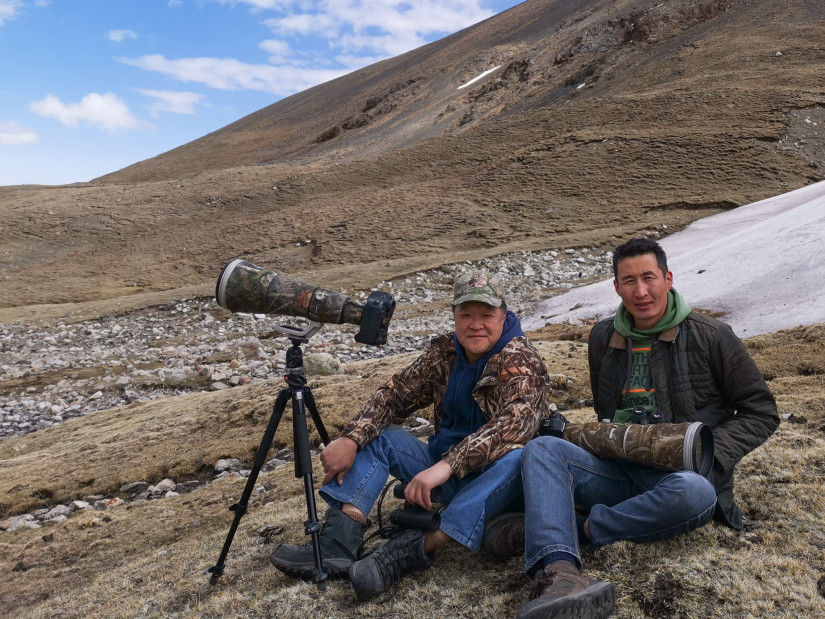
L.Jargalsaikhan with ornithologist friend Ts.Purevsuren
People
recently started taking a liking to travel and adventures. What about you? What
does travel mean to photographers?
-I do careful planning before
each journey. First of all, I ask my researcher friends from where I can find
exactly what species of bird. I start the planning almost a year ahead by
looking up the bird's migration season and then deciding on my travel buddy.
A short while ago, I made a
small trip to Marshall Bridge to see white-throated dipper (Cinclus cinclus)
that enjoys icy water. On the way, there was a little trouble because my car
went into ice. And after two hours of roaming around, I am here with you giving
an interview.

White-throated dipper (Cinclus cinclus)
Did
you fulfill your purpose?
-No, I could not. Well, you
have to track down the bird first and there is only less than 20 percent chance
that you will succeed in taking the pictures.
It
seems that bird photography is only for those who are determined and patient,
is that right?
-Quite.
Are
there any requirements, in addition to having some morals as you mentioned
earlier, for being a bird photographer?
-Just as you said, it is all about
patience. You are not allowed to make any sudden movements. When a bird flies
away as I come closer by a meter or two, I just leave it be instead of persisting
in taking its photo.
What
was the hardest bird for you to photograph?
-It was great bustard (Otis
tarda). During its mating season, the displaying ones dance with their tail
turned up and head tucked up. I wish to capture that exact moment, but unfortunately,
the species does not let anyone near during its breeding period. I have been
chasing it for seven years.
Are
you not persisting too much?
-It is a different matter. I
stop persisting when the bird gets away. That is why taking its photo remains a
dream for me. It is wonderful to have interests and dreams of one’s own. It
would be boring to stare at pigeons and larks that are close to humans through
one’s camera lens every day.
Could
you tell me about the most beautiful bird of Mongolia that you have
photographed?
-There is one species called
European bee-eater (Merops apiaster) that has rainbow colored plumage.
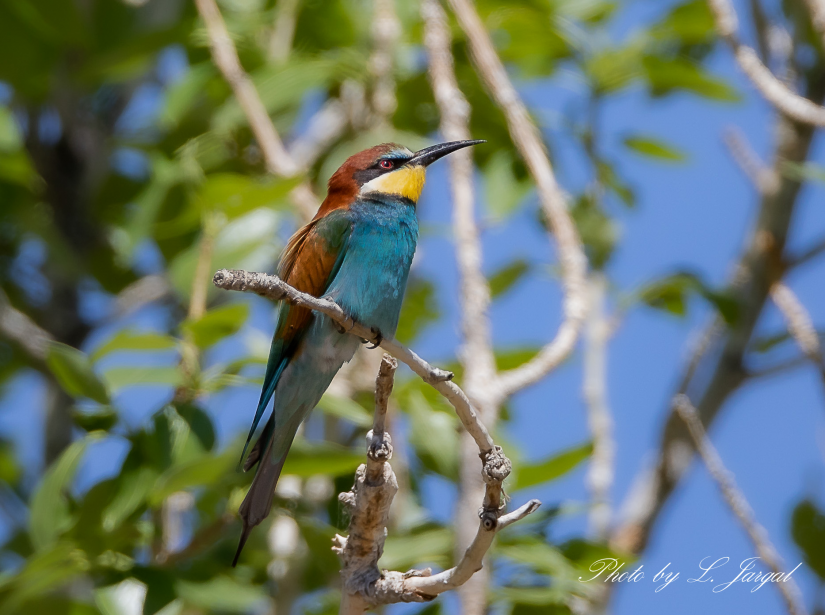
European bee-eater (Merops apiaster)
Mongolia’s
national birds are eagle and falcon. But, what beautiful and unique birds do
you recommend tourists to check out?
-Professionals may name
numerous birds here. Ornithologists would definitely recommend rare species to
protect them and raise their populations. As for me, the one that might pique
tourists’ interest is crane. The bird summers in Onon and Ulz river basins in
Khentii aimag. So the tourists can enjoy nature’s beauty when they are at it.
People do not pay much attention, but Mongolia has some species of cranes that
are extremely rare. All of white-naped crane (Antigone vipio), hooded crane
(Grus monacha), and the Siberian crane (Leucogeranus leucogeranus) that now
have small populations spend the summer in Khurkh town in Binder soum of
Khentii aimag. The eagle festival – an inseparable part of the Kazakh culture –
attracts a lot of tourists to Mongolia. For me, the crane festival held in
Binder soum is the same as that one. One important difference is that there is
no such thing as capturing the crane, training it for hunting, or feeding it,
in other words, it burdens no animal. Those who have seen a large flock of
cranes in the nature just like the gathering of swans would know how
magnificent it could be.
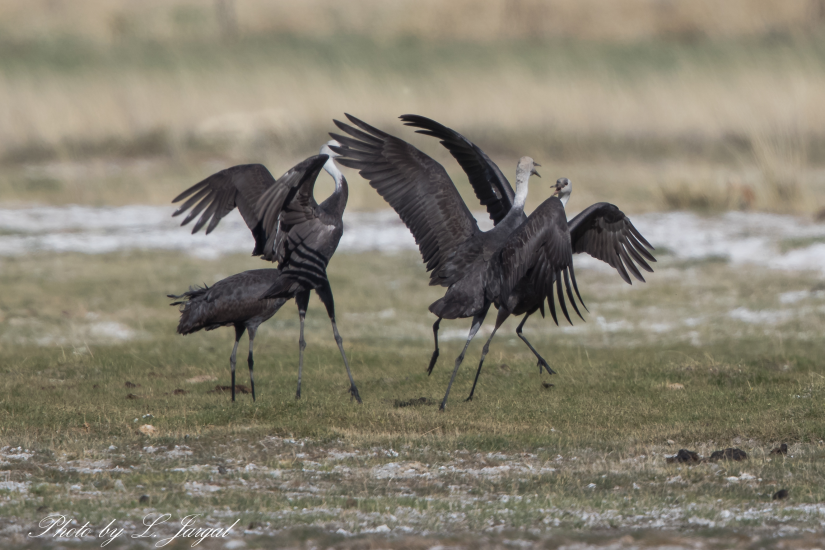
Hooded crane (Grus monacha)
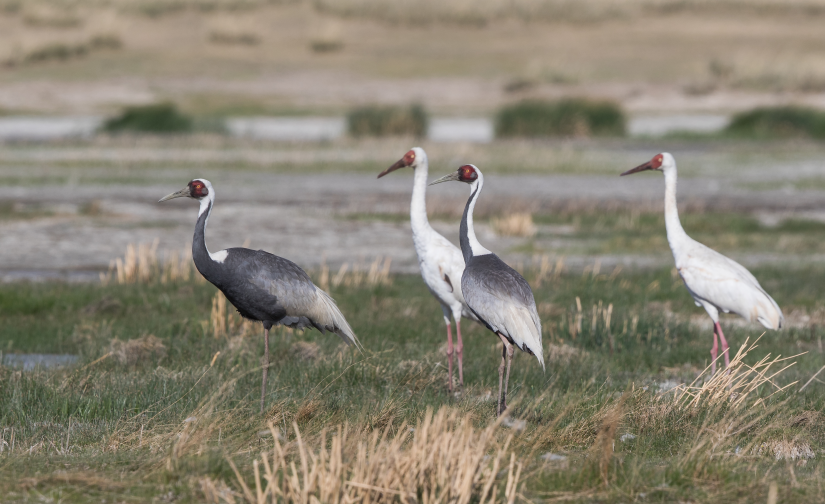
Siberian crane (Leucogeranus leucogeranus) and White-naped crane (Antigone vipio)
It
appears that you travel a long road to capture the photo of the most unique
bird, am I right?
-The longest trip I took was
to Bulgan soum of Khovd aimag. I traveled over 4,000 kilometers for that
destination. But, when you are pursuing a bird, how many kilometers you travel
or how you travel hardly matter. What matters the most is capturing the bird’s
photos just the way you wanted.
In
what countries have you photographed birds?
-I do not specifically go to
any particular country. First of all, going around the world photographing
birds would bring financial problems. I do make time to take bird photos during
my business trips. Before the coronavirus emerged, US photography association
held a big meeting. During my participation in that event, I saw birds a lot at
zoos and parks located downtown.
Speaking
of zoos, I saw a few photos you took of animals other than birds. Do you have
any plans to start photographing another animal?
-I have lately been taking
photos of insects. I took interest in it when I was living at my daughter’s in
Germany. People in Germany have a duty to plant trees and flowers every year.
When a household cannot make it, the housekeeper does the planting and also
takes care of the garden. One day, my grandchildren found an insect and placed
it in a safe place away from people's feet. And then, before I knew it, I was
already deep into taking insect pictures. (chuckles) Also, there is nothing for
me to do in winter where birds are nowhere to be seen. That is why I started
taking photos of insects in wintertime. I set a goal to photograph 200 to 300
insects in one winter. Five to six insects are photographed in a day.
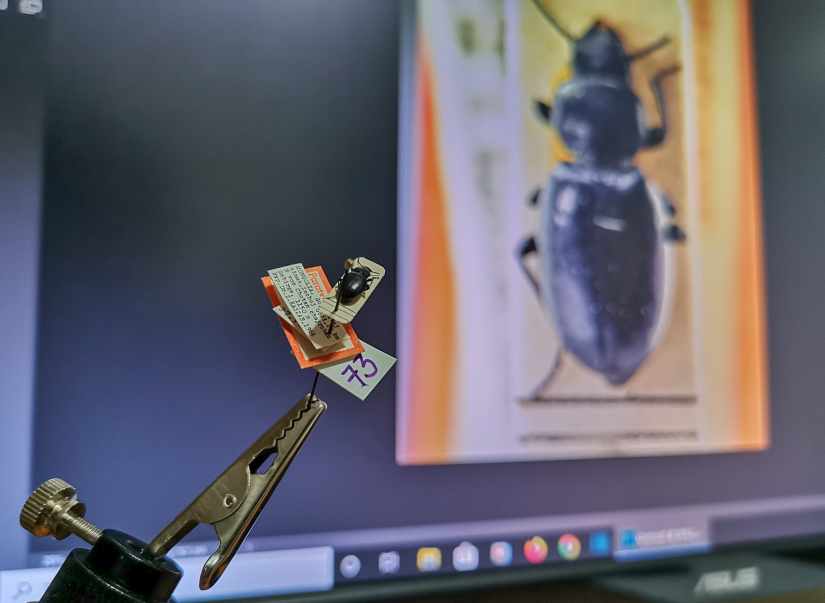
What
bird from where do you want to photograph?
-I took photos of over 370 of
the total 513 species of birds in Mongolia. One thing I wish is to increase
this number. The thing is, there are some low quality ones among my photos.
German ornithologist, photographer Andreas Buchheim stands ahead of me in terms
of photo quality and quantity. He took good quality photos of 417 species of
birds over a span of 25 years.
Andreas
Buchheim is a researcher and you are a photographer. So there must be a
difference in what you do, is that right?
-There is, indeed. A
researcher’s interest is not simply in photographing the bird, rather it lies
in a detailed study of the bird. As for me, my ultimate goal is to take photos
capturing the moment where the bird is most beautiful from a never-before-used
angle.
But
you do research about the bird you have photographed and publish the photo together
with some facts about the bird on your Facebook page, Jargal’s Bird Photo. Does
that not make you a researcher as well?
-Researchers do monitoring and
discover rare bird species. In my case, I try to give information about the
bird’s habitat and characteristics rather than posting only the photo to
promote proper use of cyberspace. I hope this also contributes to the cognizance
of young people.
What
about the bird you want to photograph abroad?
-I wish to one day go to the
Latin American country of Costa Rica, the bird paradise. I heard the country is
home to over 5,000 species of birds that are all colorful like flowers.
A
statistic shows that 67 million or around a fifth of the U.S. population of
over 300 million are birdwatchers. What about in Mongolia?
-That statistic comes from a
study conducted by the U.S. fisheries agency. The large number is related to
the country’s sedentary lifestyle. To be more specific, people in the land
protect their cultivated fields and farms from possible harms of rodents and
birds. That is how they become familiar with the birds.
As for Mongolia, it seems that
a lot of young people and travelers are interested in birds. Compared to our
generation, young people have become more sensitive and cognizant following the
modern development. Also, people started to learn more about birds to show them
to their children, but there is no specific study on what you have asked in
Mongolia.
- 15 PHOTOS AT MOST
ARE CHOSEN FROM 100 SHOTS -
I
heard that flamingo was once spotted in Mongolia?
-Ornithologists Ariunbaatar
and Tuvshintugs studied bird diseases from the Far West to the Far East of
Mongolia, visiting lakes, forests, and every other place where birds gather in
large flocks and testing dropping samples they have collected. One day during
that journey, they rang me to say that they spotted flamingo in Arkhangai
aimag. As soon as the news arrived, I, who was in Dornogobi aimag at the time,
drove overnight to Arkhangai aimag to see one flamingo the next morning. Seeing
it worn out, I guessed that it had got lost from the flock. Over the span of
more than 60 years, the species has been spotted in Mongolia only four times,
including that one time in Arkhangai aimag. I also photographed the bird at a
lake in central Turkey. Flamingo is a magnificent and outstandingly unique
bird.
Have
you ever discovered a new species of bird while taking photos?
-In North America, there is a bird called Baird's sandpiper (Calidris bairdii). It winters in the islands of Chile. Strangely, I came across the bird in Arkhangai aimag during a trip with my researcher friend Purevsuren and took its picture. The bird that had never been recorded in Mongolia before came to the other side of the world. Besides that, I have not spotted a new species.
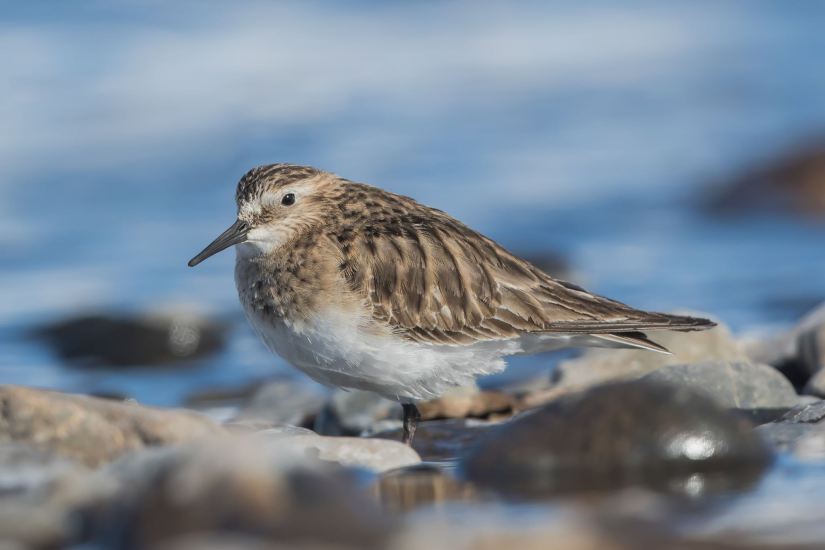
Baird's sandpiper (Calidris bairdii)
At
our previous meeting, you said you choose only one photo from 500 shots at
times. Is that true?
-It is indeed true. For
example, only 15 photos at most are chosen from 100 shots and even that 15 have
to go through further selection. Some photographers take numerous shots with
high-speed camera, but I prioritize quality over quantity.
Are
there wild birds smaller than larks in Mongolia?
-A bird called goldcrest
(Regulus regulus) that is usually seen eating on trees can be named here. There
is another small greenish songbird that can be found in trees and bushes. The
sound it makes is often heard but the bird itself hardly comes out.

Goldcrest (Regulus regulus)
- THE MOMENT I WAS ABOUT TO TAKE MY FIRST PHOTOS, IT FELT LIKE I WAS HUNTING -
What
would you say about the first photos that you were content with or met your
requirements?
-That would be a photo of
mallard. “I finally captured a great shot, huh” I happily thought to myself at
first glance. There is also a photo of small bird called red-flanked bluetail
(Tarsiger cyanurus). Now that I look at them, they are not that great, but I
keep them to remember how my skills were at first.
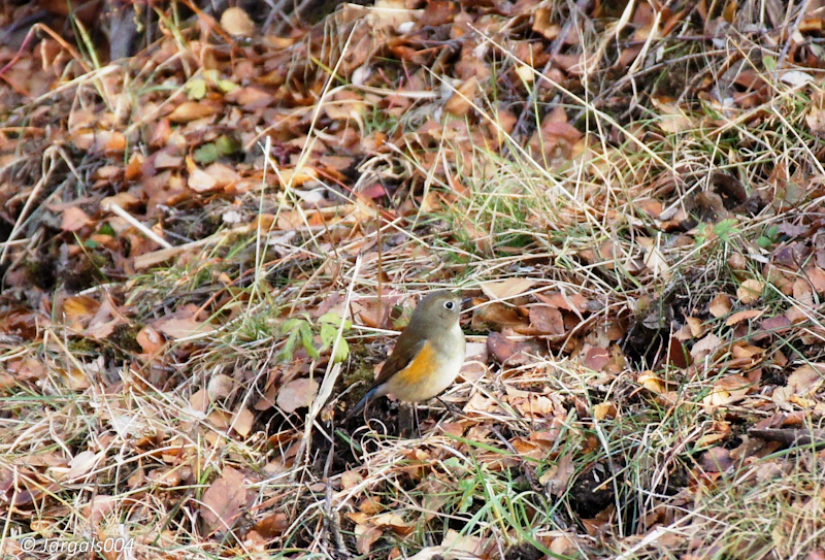
First bird photo / Red-flanked bluetail (Tarsiger cyanurus)
How
did it feel to see the bird through your camera lens for the first time?
-It felt like I was about to
hunt the bird down.
But
there is a difference between photographing and hunting, right?
-Yes, there is. If a hunter
were to come again to the hunting ground they used the day before, they would
probably go back empty handed because no animal would go around the area for
some days after the hunting. But if a photographer returns to the same
photo-shoot location a day after, the birds will still be there. Most importantly,
both hunters and photographers should not make sudden movements or sound. That
is why the moment I was eyeing through my camera lens to photograph the first
bird felt like I was about to hunt it down.
You
must observe birds a lot even though you are not a researcher. How smart are
they?
-The ultimate goal of animals
is to produce offspring. Birds have the most powerful instinct when it comes to
protecting their young. Falcon, for example, is a very bold bird that would
attack any animal, small or big, in order to protect its chicks. Also, there is
this overcautious bird called northern goshawk (Accipiter gentilis) that just
starts attacking to protect the young as well.
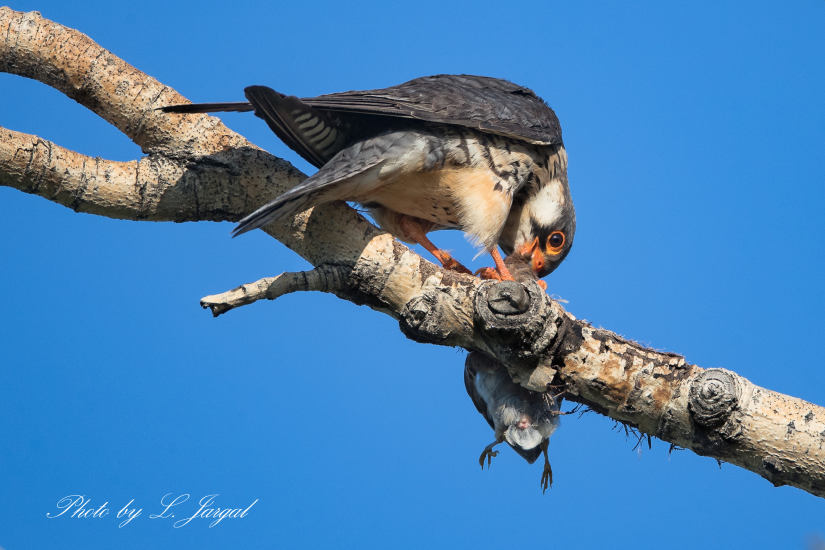
Amur falcon (Falco amurensis)
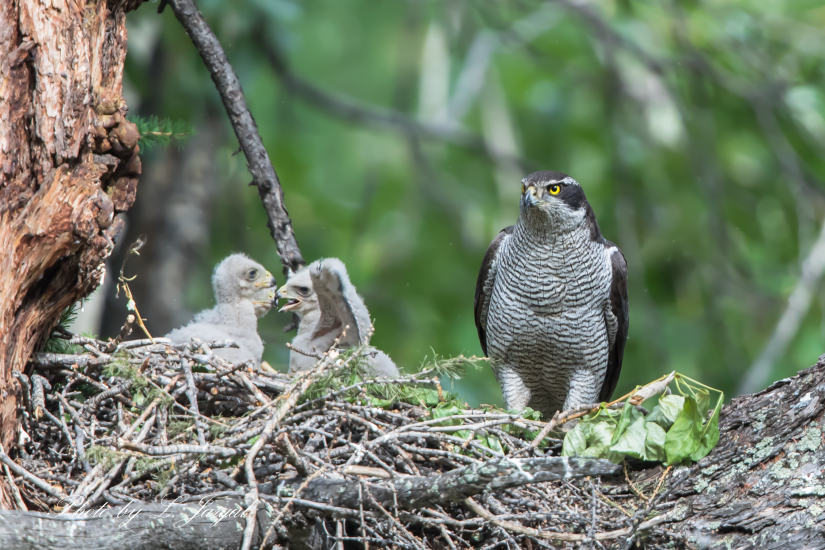
Northern goshawk (Accipiter gentilis)
Have
you ever photographed a nocturnal bird?
-I tried many times to capture
photos of nocturnal bird species. Unfortunately, I could not. There are a few
lucky shots of owls, but that is all. There is an Argentinian couple that
specializes in the photography of nocturnal birds. Their shots are surely
amazing that I admire them while also wondering just how they do it.
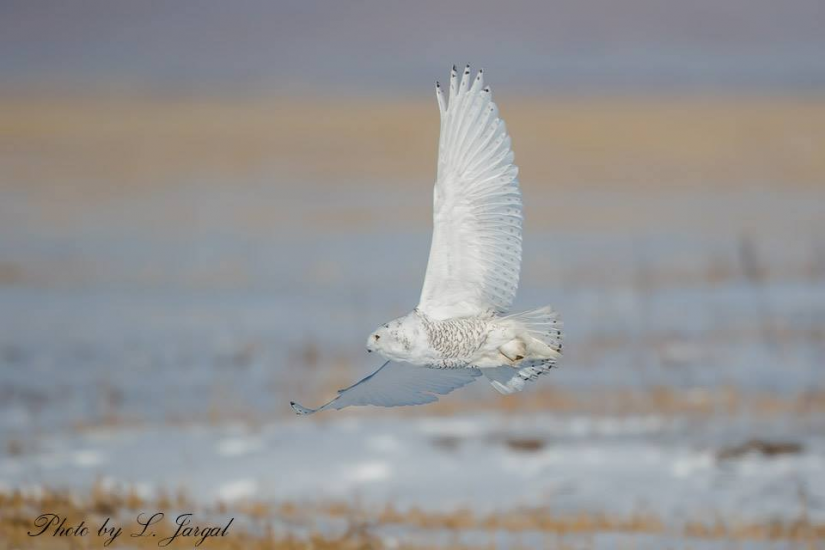
Snowy owl (Bubo scandiacus)
There
is an opportunity to meet them and learn from their experience, right?
-Yes. I would really like to
talk with them all night and photograph nocturnal birds together (chuckles).
Nowadays,
it is not that common to see birds in urban areas. What birds have you stumbled
on amid the busy city?
-One of the shortcomings of
our city is the fact that it does not have many parks, hence the small number
of birds. When I was young, a lot of pretty birds used to gather at the open
space behind State House. But now, we rarely hear bird chirps around the
streets of Ulaanbaatar in both winter and summer. I sometimes come across birds
seeking refuge in the city from cold snaps. In recent years, a rising number of
Eurasian woodcocks (Scolopax rusticola) have died from hitting tall buildings.
I guess it is because their flyways pass through the city. I do not really look
out for birds in the city as I usually photograph the species in the
countryside.
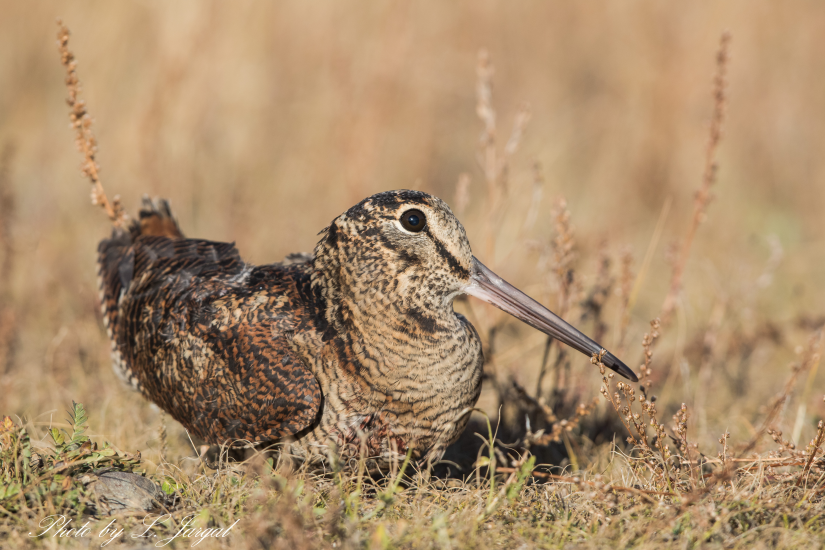
Eurasian woodcocks (Scolopax rusticola)
What
are the best time of the day and season for bird photography?
-The best season would be
spring because birds are most beautiful during their mating season. In late
June, they hide in reeds or around wetlands and forests. When it comes to the
best time of the day to photograph birds, morning triumphs other times of the
day. It is great to photograph a bird that just woke up. It is preferable to
take your photos at dawn or dusk. Also, photos taken just after rain with no
particles in the air come out amazing.
Are
people around you also interested in birds?
-I never force those around me
to be bird enthusiasts because pushing your own interests onto others is no
good. But my wife knows bird names better than me. My two daughters and
sons-in-law keep me informed of the unique birds they saw. It seems that they
feel obliged to support me in that way (chuckles). As for my two grandchildren,
they are deeply immersed in it. Well, all children are interested in animals.
One day back in Germany, they found an insect and put it out in the garden away
from people’s feet, saying, “Mother almost stepped on it”. I believe that love
and care for animals from young age indicates that the person is growing into a
kind one.
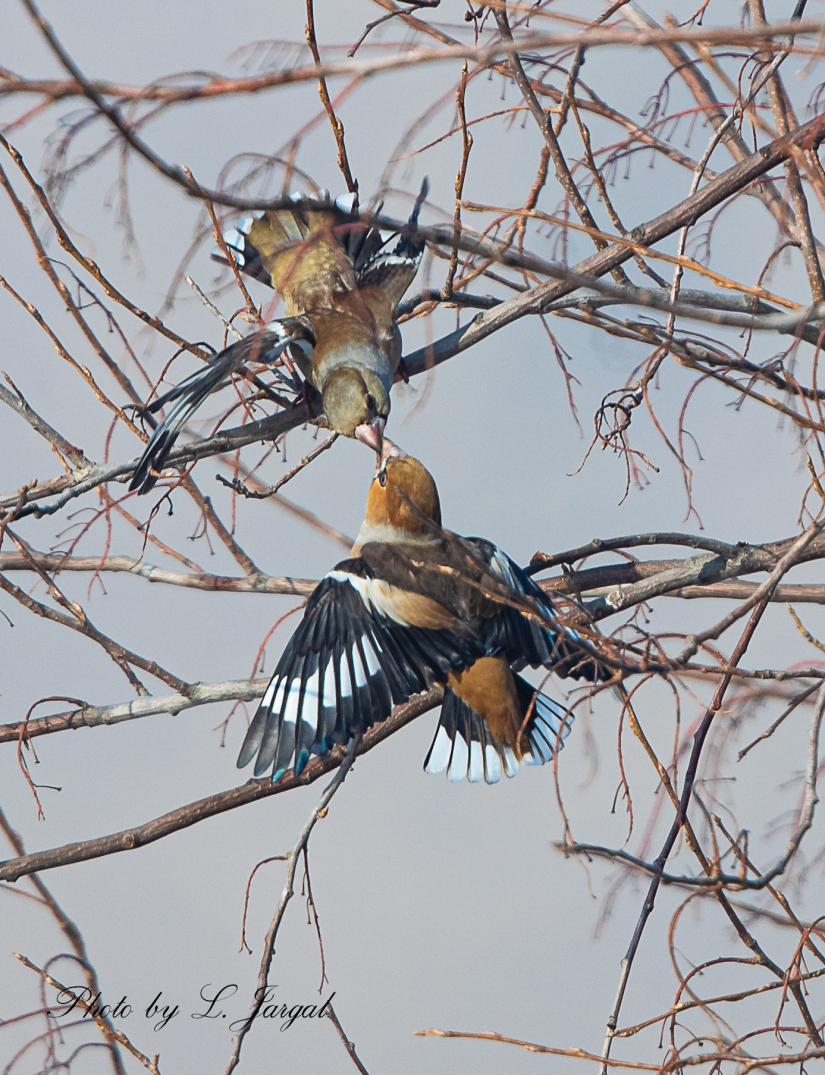
Hawfinch (Coccothraustes coccothraustes)
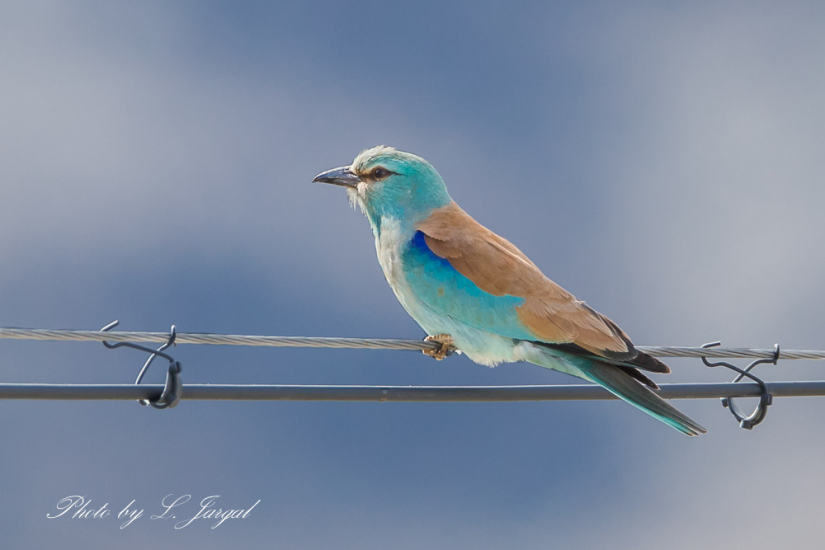
European roller (Coracias garrulus)
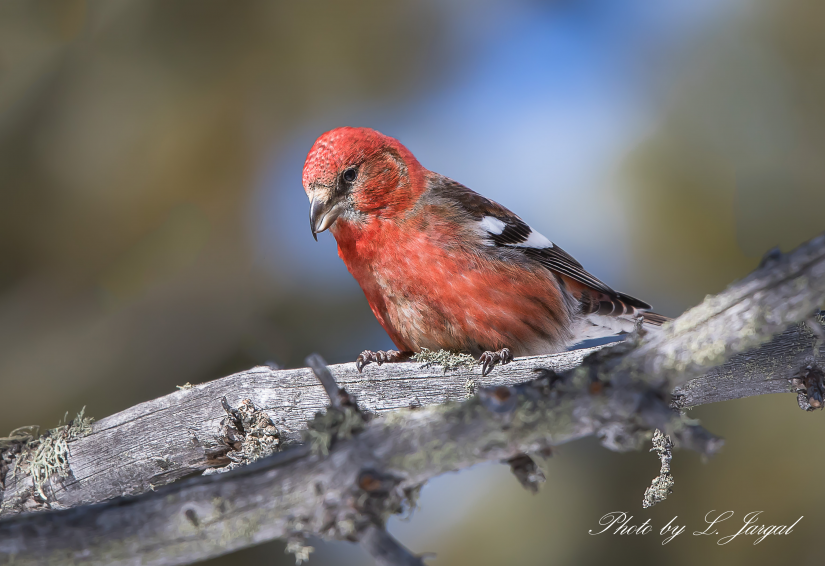
Two-barred crossbill (Loxia leucoptera)

Bird photographer L.Jargalsaikhan / Photo by B.Chadraabal
B.Altankhuyag
 Ulaanbaatar
Ulaanbaatar







